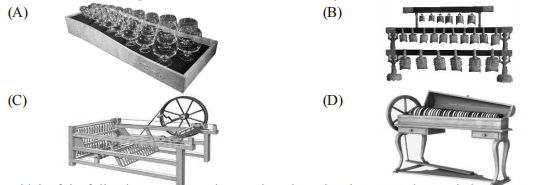整合能力
110學測英文試卷 43
第41至44題為題組
43. Which of the following statements about the prickly pear cactus is true?
(A) Its soft inner part is often discarded.
(B) It was not discovered until the modern era.
(C) It turns into 200,000 tons of waste in Mexico each year.
(D) It appears in a prominent place on Mexico’s national flag.
110學測英文試卷 44
第41至44題為題組
44. What advantage does the prickly pear cactus have over other biofuel crops?
(A) It generates more energy.
(B) It will not influence food prices.
(C) It may replace feed for livestock.
(D) It can increase global food production.
110學測英文試卷 45
第45至48題為題組
The concept of a travel document, which shows a person is under a ruler’s protection while in a foreign land, has probably existed since rulers and states were first invented. But the earliest mention of an object which we might recognize as a passport appeared in about 450 B.C. The Hebrew Bible states that Nehemiah, an official serving King Artaxerxes of ancient Persia, asked permission to travel to Judah. The King agreed and gave Nehemiah a letter “to the governors of the province beyond the river,”” requesting safe passage for him as he travelled through their lands.
Later, in the medieval Islamic Caliphate, a form of passport was the bara’a, a receipt for taxes paid. Only people who paid their taxes were permitted to travel to different regions of the Caliphate. In medieval Europe, on the other hand, travel documents were issued by local authorities, and generally contained a list of towns and cities which the document holder was permitted to enter or pass through. On the whole, documents were not required for travel to seaports, which were considered open trading points, but documents were required to travel inland from seaports.
King Henry V of England is credited with having invented the first true passport, as a way of helping his subjects prove who they were in foreign lands. The earliest reference to these documents is found in a 15th-century Act of Parliament, while the term “”passport”” came into use about a century later. Nevertheless, passports were not generally required for international travel until the First World War. It was at this time that passports as we would recognize them today began to be used.
45. How is the information in the passage organized?
(A) In order of time.
(B) By cause and effect.
(C) In order of importance.
(D) By definition and illustration.”
110學測英文試卷 46
第45至48題為題組
46. Which of the following statements is true about the earliest travel document?
(A) It was issued by the king of Judah.
(B) It was given to an official of Persia.
(C) It appeared more than three thousand years ago.
(D) It served to invite people to travel beyond the river.
110學測英文試卷 49
第49至52題為題組
Benjamin Franklin, one of the Founding Fathers of the United States, was not only a great politician but also a highly accomplished scientist and inventor. Of his many achievements, probably the least well-known are his accomplishments in music. He invented an instrument for which both Mozart and Beethoven composed music—the glass armonica.
In 1761, while living in England, Franklin heard a performer playing musical glasses. Franklin was charmed by the music, but felt that there was a better way to create the same sound. He had a glassmaker create thirty-seven hemispheres made of glass, with each being a different size and thickness to produce different pitches. The glass hemispheres were color coded with paint to identify the notes. Franklin ran an iron rod through a hole in the top of each hemisphere so that they could nest together from largest to smallest. He linked all of this to a device shaped like a spinning wheel, with a foot control that turned the rod, making the glass hemispheres rotate. Franklin moistened his fingers and held them against the rims of the glass hemispheres as they turned, producing a unique sound. He mastered the instrument and took it to parties and gatherings to play for his friends and acquaintances. The instrument became so popular that thousands were built and sold.
But musical fashions changed. Music was moving out of the relatively small halls of Mozart’s day into the large concert halls of the 19th century, and without amplification, the glass armonica simply couldn’t be heard. Concert reviews from the period mourned the fact that the armonica sounded wonderful—only when it could be heard. So, alas, Franklin’s marvelous invention was ultimately abandoned. The popularity of the instrument faded early in the 19th century, but it is still played occasionally today.
49. Which of the following is the closest illustration of Benjamin Franklin’s invention?

110學測英文試卷 50
第49至52題為題組
50. Which of the following statements is true about how the glass armonica works?
(A) Water has to be poured into the glass hemispheres.
(B) Colored paint makes it sound better and last longer.
(C) An iron rod is used to strike the thicker glass hemispheres.
(D) The performer’s fingers have to be slightly wet when playing it.
110學測英文試卷 51
第49至52題為題組
51. According to the passage, why did the glass armonica lose its popularity?
(A) The skill of playing the glass armonica was very hard to master.
(B) Famous musicians like Beethoven had problems composing for it.
(C) Concert halls became too big for its music to be heard by the audience.
(D) Reviewers in that time indicated that it was clumsy and not fashionable.

